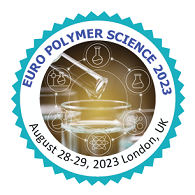Polymer solar Cells
The advantages of lower weight, flexibility, lower manufacturing costs, easier integration with other products, low environmental impact during manufacturing and operations, and quick energy payback times make organic material-based solar cells—in particular polymeric solar cells—an appealing alternative to silicon-based solar cells for capturing solar energy. The reproducibility of these efficiencies, even with the most recent efficiencies reported up to 17%, is subpar, with a large range in the efficiencies claimed across the literature. Interfaces are crucial to the functioning and functionality of these devices since they are built on ultrathin multilayer organic sheets.
With an emphasis on their physical mechanisms, this paper provides a succinct description of the main interfacial concerns that are in charge of affecting the performance of the device. The fundamentals of polymeric solar cells are introduced, and then a brief discussion of charge production and recombination at the donor-acceptor bulk heterojunction interface follows. The performance and stability of these devices are next discussed in relation to the interfacial morphology for the active layer. The creation of injection and extraction barriers is then explained along with how they affect the functionality of the device. The usage of interface dipoles is one of the most popular methods for removing these obstacles in order to increase solar cell efficiency.
Related Conference of Polymer solar Cells
32nd International Conference on Advanced Materials, Nanotechnology and Engineering
39th International Conference on Materials Science and Engineering
12th International Conference and Expo on Ceramics and Composite Materials
24th International Conference and Exhibition on Materials Science and Chemistry
Polymer solar Cells Conference Speakers
Recommended Sessions
- Biopolymers
- Cellulose for biofuels
- Chemical modifications of polymers
- Main Future Trends in Polymer Sciences
- Polymer analysis
- Polymer and materials chemistry
- Polymer Nano composites
- Polymer physics
- Polymer processing and performance
- polymer recycling and upcycling
- Polymer solar Cells
- Polymer synthesis
- Polymer Technology
- Polymer theory and simulation
- polymerization reactions
- Polymers for drug delivery, gene therapy
- Properties Polymeric material
- Self-assembly in polymeric systems
Related Journals
Are you interested in
- Additive Manufacturing – 3D Printed Materials - Ceramics 2026 (Italy)
- Additive Manufacturing – 3D Printing - Material science-2026 (Italy)
- Advanced Ceramics – High Performance - Ceramics 2026 (Italy)
- Advanced Materials and Functional Devices - ADVANCED MATERIALS 2026 (France)
- Advanced Materials and Nanotechnology - ADVANCED MATERIALS 2026 (France)
- Bio-Ceramics – Healthcare Innovations - Ceramics 2026 (Italy)
- Biomaterials – Healthcare Innovations - Material science-2026 (Italy)
- Biomedical Nanotechnology - ADVANCED MATERIALS 2026 (France)
- Carbon Nanostructures and Graphene - ADVANCED MATERIALS 2026 (France)
- Ceramic Coatings – Wear & Thermal Protection - Ceramics 2026 (Italy)
- Ceramic-Polymer Hybrids – Multifunctional Materials - Ceramics 2026 (Italy)
- Ceramics – High-Performance Materials - Material science-2026 (Italy)
- Composite Materials - ADVANCED MATERIALS 2026 (France)
- Composites – Lightweight & Strong - Material science-2026 (Italy)
- Computational Materials – Modeling & Simulation - Material science-2026 (Italy)
- Energy & Electronic Materials – Functional Ceramics - Ceramics 2026 (Italy)
- Energy Materials – Batteries & Storage - Material science-2026 (Italy)
- Functional Nanostructures – Design & Fabrication - Material science-2026 (Italy)
- Functionally Graded Materials – Tailored Properties - Ceramics 2026 (Italy)
- Material Characterization – Testing & Analysis - Material science-2026 (Italy)
- Metal Alloys – Strength & Durability - Material science-2026 (Italy)
- Metal Matrix Composites – Strength & Durability - Ceramics 2026 (Italy)
- Miniaturization Technology - ADVANCED MATERIALS 2026 (France)
- Molecular biology and Materials science - ADVANCED MATERIALS 2026 (France)
- Nano Materials - ADVANCED MATERIALS 2026 (France)
- Nano Structures - ADVANCED MATERIALS 2026 (France)
- Nano Technology and Photonics Communication - ADVANCED MATERIALS 2026 (France)
- Nanocluster and Nanoscience - ADVANCED MATERIALS 2026 (France)
- Nanocomposites – Functional Applications - Ceramics 2026 (Italy)
- Nanomaterials – Advanced Applications - Material science-2026 (Italy)
- Nanometrology and Instrumentation - ADVANCED MATERIALS 2026 (France)
- Nanoparticle and Nanoscale Research - ADVANCED MATERIALS 2026 (France)
- Nanoparticle Synthesis and Applications - ADVANCED MATERIALS 2026 (France)
- Nanosensors Devices - ADVANCED MATERIALS 2026 (France)
- Nanotechnology-Basics to Applications - ADVANCED MATERIALS 2026 (France)
- Optical Materials and Plasmonics - ADVANCED MATERIALS 2026 (France)
- Photonic Materials – Optical & Electronics - Material science-2026 (Italy)
- Polymer Composites – Lightweight Solutions - Ceramics 2026 (Italy)
- Polymers – Functional & Smart Designs - Material science-2026 (Italy)
- Properties of Nano Materials - ADVANCED MATERIALS 2026 (France)
- Reinforced Composites – Strength Optimization - Ceramics 2026 (Italy)
- Science and Technology of Advanced Materials - ADVANCED MATERIALS 2026 (France)
- Smart Materials – Responsive & Adaptive - Material science-2026 (Italy)
- Spintronics - ADVANCED MATERIALS 2026 (France)
- Structural Composites – Aerospace & Automotive - Ceramics 2026 (Italy)
- Sustainable Ceramics – Eco-Friendly Materials - Ceramics 2026 (Italy)
- Sustainable Materials – Eco-Friendly Solutions - Material science-2026 (Italy)
- Thermal Barrier Materials – High-Temperature Performance - Ceramics 2026 (Italy)
- Thin Films – Coatings & Surface Engineering - Material science-2026 (Italy)
- Wear-Resistant Composites – Industrial Applications - Ceramics 2026 (Italy)

